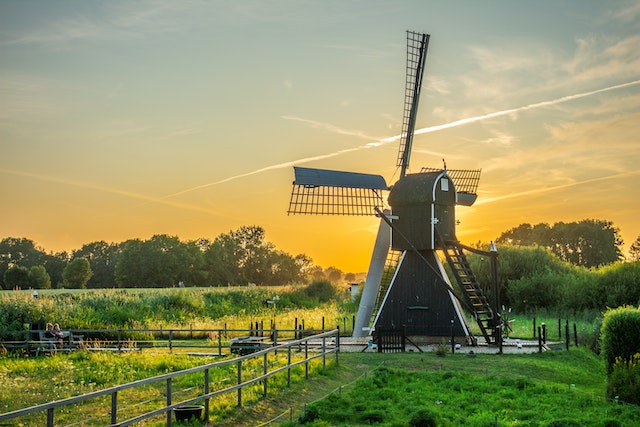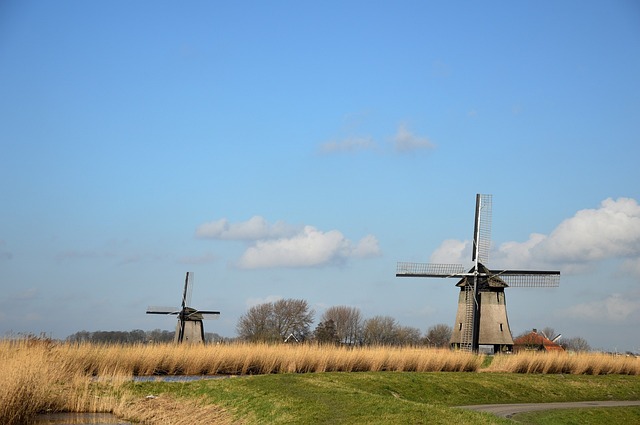Technology in rural areas needs to be a bigger priority moving forward, especially regarding sustainable rural development. These communities play a crucial role in the modern world, but developers all too often exclude them from the benefits of modern technology.
High-quality broadband internet access and technology-powered infrastructure are among the growing advancements remaining popular in urban areas but not reaching rural ones.
However, it has immense potential to help these communities flourish in the future, which can, in turn, be beneficial for big cities like London by enabling better communication with surrounding rural areas.
Misconceptions About Technology in Rural Areas
 When most people think of rural areas, they imagine seclusion and a distinct lack of technology. It’s almost as if these communities are living without it on purpose. However, there is a difference between wanting peace and seclusion and total isolation. Rural societies can benefit greatly from modern technology without breaking the tranquillity of farms and the countryside.
When most people think of rural areas, they imagine seclusion and a distinct lack of technology. It’s almost as if these communities are living without it on purpose. However, there is a difference between wanting peace and seclusion and total isolation. Rural societies can benefit greatly from modern technology without breaking the tranquillity of farms and the countryside.
As an example, roughly 46 million Americans live in rural communities, accounting for 14% of the total population. That number includes thousands of families. With more and more schools today using online, hybrid, and digital learning tools, it’s becoming more critical for children and families to have technology in rural areas.
Additionally, agricultural communities can benefit massively from technology in farming processes. Farmers can use IoT devices and AI to help them optimize and automate farming. This could help them increase yields and provide more food to the rest of the country.
The role of automation in agriculture is only becoming more essential as farming labor shortages grow worse. Advanced meteorological technology and climate tracking technologies could also help farmers better prepare for each season.
The whole idea that rural areas are or should be devoid of technology is a severe misconception today. These communities can benefit from technology just as much as urban areas — if not more.
The Social Importance of Technology
 Technology in rural areas is crucial for them to maintain social connections. This goes beyond the ability to call loved ones out of town, though that is important. If communities remain cut off technologically, they risk fading away as younger generations flock to urban ones.
Technology in rural areas is crucial for them to maintain social connections. This goes beyond the ability to call loved ones out of town, though that is important. If communities remain cut off technologically, they risk fading away as younger generations flock to urban ones.
Experts point out that access to modern broadband and mobile communications technologies is crucial in emergencies and for accessing a growing number of digital resources. Rural communities are without e-commerce, virtual learning, online-only services, and digital marketing tools.
Rural businesses are a key part of the economy and could provide hundreds of thousands of rewarding jobs. However, these areas’ social-digital divide is making it difficult for these businesses to reach customers and prospective employees. Even so, according to Small Business Authority, research shows rural entrepreneurs start more businesses and have higher five-year survival rates than their urban counterparts. Meanwhile, millions of small-business owners are trying to make it in urban areas, where they pay more for rent and have more competition.
With increased technological development and infrastructure, more people might move to rural areas instead. This would bring new businesses and new revenue for existing businesses, helping entire communities thrive. These societies wouldn’t transform into urban ones — they’ll simply level the social playing field.
Technology and Sustainable Rural Development
 Sustainable rural development is the future of the world’s rural areas, which could one day be models for environmentally-friendly societies. Sustainable development would protect their natural beauty and ecosystems while attracting younger generations to the community.
Sustainable rural development is the future of the world’s rural areas, which could one day be models for environmentally-friendly societies. Sustainable development would protect their natural beauty and ecosystems while attracting younger generations to the community.
The environment is Gen-Z’s top concern today and heavily influences their career choices. Climate and environmental careers in these areas would help bring the digital-native generation back to the world’s rural communities. These jobs could revitalize populations and economies while supporting technology-driven sustainable rural development. The communities would grow and evolve into smart ones that peacefully combine technology and nature.
Virgin Hyperloop has developed a model of what these rural communities of the future could be. The technology could bring clean energy to these areas — from solar power to electric vehicle charging stations. These could help residents save on fuel and protect their regions from emissions and pollution. Cutting-edge construction technologies like prefab building would allow rural communities to construct modern, green infrastructure quickly. It could also facilitate smart, sustainable farming practices to create green, fully self-sufficient societies.
Bringing Rural Areas Into the Future
 Technology has the potential to advance, transform and revitalize rural areas worldwide. Developers have forgotten these communities in the push for smart megacities, but they hold immense value for everyone. Technology there could improve farming and agriculture, help businesses thrive, provide affordable modern housing for millions and spark sustainable rural development. By investing in technological development for rural areas, today’s leaders are investing in a better future for everyone.
Technology has the potential to advance, transform and revitalize rural areas worldwide. Developers have forgotten these communities in the push for smart megacities, but they hold immense value for everyone. Technology there could improve farming and agriculture, help businesses thrive, provide affordable modern housing for millions and spark sustainable rural development. By investing in technological development for rural areas, today’s leaders are investing in a better future for everyone.
Author Profile

- Online Media & PR Strategist
- As the Chief of Marketing at the digital marketing agency ClickDo Ltd I blog regularly about technology, education, lifestyle, business and many more topics.
Latest entries
 LifestyleApril 9, 2025Top 28 Hatton Garden Jewellers to Shop for the Best Jewellery
LifestyleApril 9, 2025Top 28 Hatton Garden Jewellers to Shop for the Best Jewellery Companies In LondonApril 9, 202510 Best Accounting Firms for Small Businesses in London
Companies In LondonApril 9, 202510 Best Accounting Firms for Small Businesses in London Business AdviceMarch 27, 20259 Ways Technology Helps Businesses Offer Better Promotions
Business AdviceMarch 27, 20259 Ways Technology Helps Businesses Offer Better Promotions Health & BeautyMarch 16, 2025Top 15 Dentists in London – Private Emergency Dentist
Health & BeautyMarch 16, 2025Top 15 Dentists in London – Private Emergency Dentist




